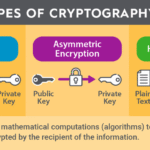In an increasingly interconnected digital landscape, the role of cryptography has burgeoned, establishing itself as a cornerstone of digital trust. It is more than mere encoding; it is a sophisticated interplay of mathematics, computer science, and secure communication methods. This holds paramount importance, especially as the world pivots to a more digitized and data-driven economy.
Every day, individuals and businesses exchange vast amounts of sensitive information. Financial transactions, personal communications, and confidential corporate data traverse the expanse of the internet. The vastness of this digital exchange raises a critical question: How can we trust the integrity and confidentiality of our communications? The answer lies profoundly in cryptography, which ensures that data remains secure against unauthorized access, tampering, and forgery.
To grasp the relevance of cryptography in reinforcing digital trust, we must appreciate its foundational principles. At its core, cryptography employs algorithms to transform secure information into an unreadable format for unauthorized users. This method, known as encryption, ensures data confidentiality. Conversely, decryption restores the original information, accessible solely to those who possess the requisite keys. This duality of function underpins the trust equation, as it assures users that their data remains private and unmolested.
The common observation today is that we live in an age where data breaches proliferate with alarming frequency. This phenomenon surfaces from a combination of unscrupulous actors and an evolved landscape of cybercrime. High-profile data breaches, hitting corporations and services that millions rely on, cement a collective sense of vulnerability. Cryptography provides the inherent mechanisms to mitigate such threats. For example, the implementation of end-to-end encryption in communication apps ensures that even if data is intercepted, it remains inaccessible without the appropriate keys.
Yet, the fascination with cryptography transcends mere utility; it embodies a broader philosophical discourse on privacy, security, and trust. The persistent challenge of balancing technological advancement with ethical considerations has sparked debates about the extent to which privacy should be preserved in the digital age. Cryptography stands as a watchdog of privacy rights, asserting that individuals should be empowered to control their own information. The moral imperative to safeguard sensitive data intertwines with the need for cryptographic measures that reinforce trust.
Furthermore, the concept of public-key infrastructure (PKI) expands the cryptographic paradigm by introducing asymmetric encryption. In PKI, two keys—a public key for encryption and a private key for decryption—work in tandem. This model not only fortifies confidentiality but also enhances authenticity. Digital signatures, which authenticate identities in digital communications, are a quintessential application of this cryptographic approach. They denote that the sender is legitimate and that the data has not been altered in transit. Such functionalities breed trust among parties that might otherwise transact amidst uncertainty.
While the technological advancements in cryptography further validate its necessity, they also expose its limitations. Quantum computing emerges as a powerful adversary, with the potential to disrupt established cryptographic protocols. This impending paradigm shift compels researchers to innovate post-quantum cryptographic methods, ensuring that the foundational tenets of trust remain intact amid progress. The urgency to adapt and evolve cryptographic solutions mirrors societal vigilance in combatting encryption-facilitated criminality and espionage.
Cryptography also facilitates regulatory compliance in an era fraught with stringent data protection laws. Establishments must consider the legal frameworks that govern data collection and retention. The General Data Protection Regulation (GDPR) in Europe, for example, illustrates the intersection of law and cryptography. Organizations that employ robust encryption methodologies not only protect user data but also bolster their compliance efforts. Fostering transparency catalyzes trust—an invaluable currency in the digital domain where reputations can be irrevocably damaged through data mishandling.
Moreover, the fascination with cryptography stems from its recursive nature—like an ever-deepening abyss into which one can descend, each layer revealing more complex truths and sophisticated methodologies. The allure lies in the mystery; the mathematical elegance of algorithms, the intricate puzzles they solve, and the cryptographic innovations that continually emerge. From the humble beginnings of Caesar ciphers to modern elliptic curve cryptography, this field demonstrates a remarkable capacity for evolution and resilience.
In summation, as we navigate the myriad challenges of the digital era, cryptography remains not merely a tool but an essential framework for establishing and maintaining digital trust. It serves to reinforce the integrity of our communications, safeguard personal data, and uphold ethical standards in digital interactions. The interplay of technology and philosophy surrounding cryptography compels society to continually evaluate the implications of its use, ensuring that the right to privacy and the integrity of information are not only preserved but also championed. In a world fraught with uncertainty and the omnipresence of surveillance, cryptography stands as a bastion of trust, indispensable in safeguarding the sanctity of our digital lives.









Leave a Comment